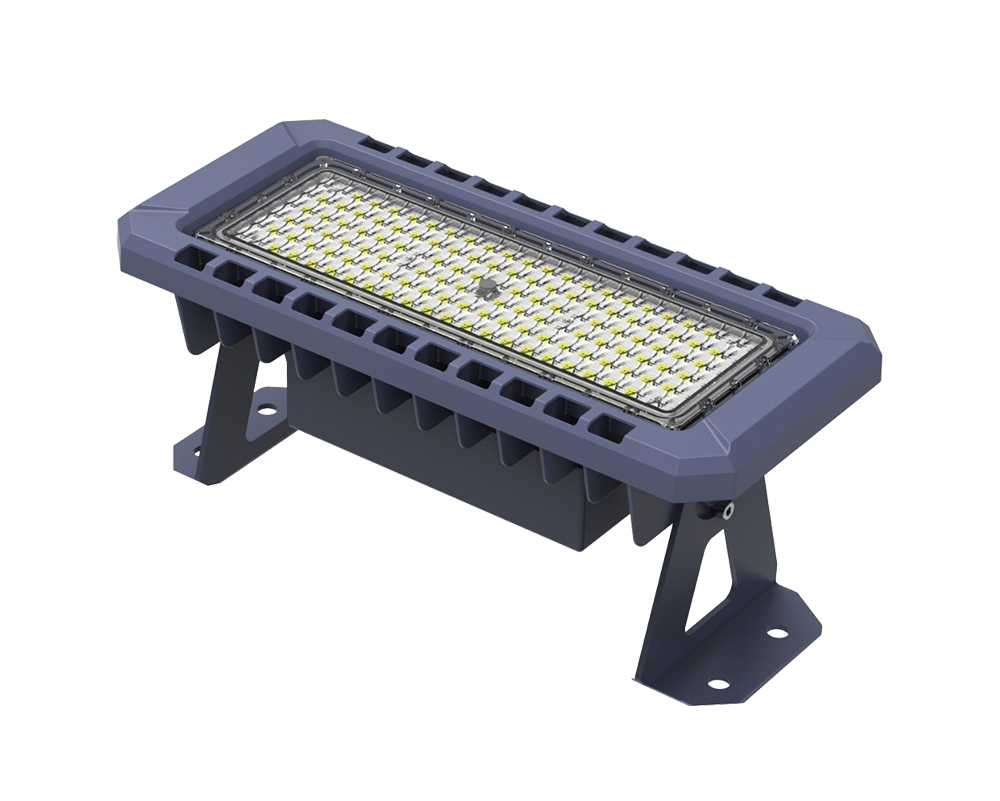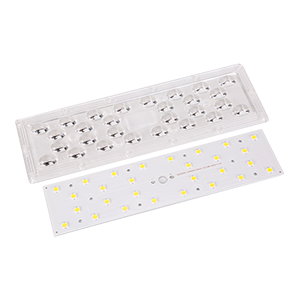LED street light distribution requirements and scheme analysis
2020-09-01
LED street light distribution enables the light to be projected as far as possible to various areas of the illuminated road surface, and obtains the light distribution that meets the requirements of road lighting. Whether the LED street light distribution design is accurately in place is one of the key factors that can replace traditional street lights.
1.LED street light distribution shape characteristics
In road lighting, if there is no light distribution for the LED street light source, the light type illuminated on the road surface is a large circular spot, and some light will be scattered outside the road surface without being used.

In order to meet the requirements of brightness, illuminance and uniformity of the road surface, and make most of the light distributed on the road surface as far as possible to improve the utilization rate of the light and reduce unnecessary waste, it is usually necessary to distribute the light of the LED street lamp, and the light type or spot formed by the light output of the LED street lamp is preferably rectangular, as shown in Figure 1(b).
2. Standard light distribution requirements for road lighting
According to the requirements of the "Urban road lighting design Standard", the road lighting is divided into expressways and trunk roads, secondary trunk roads, branch roads, and the standard value of LED road lighting distribution requirements should meet the provisions of Table 1.
3. Light distribution curve of LED street lamp
The spatial distribution of luminous intensity is usually called the distribution curve. Under the street lamp, the light intensity should be minimal, and the light intensity I increases as the elevation Angle θ increases.
The functional relationship is as follows:
That is, the expression of light distribution curve. Due to the complexity of optical design, the light distribution shape is difficult to fully conform to the functional relationship, so the projection range of θ Angle can be reduced, and the spacing of lamps can be reduced to obtain uniform illuminance.

LED street light distribution scheme and analysis
The light distribution scheme of LED street lights is carried out on the basis of road lighting requirements, while taking into account glare control and environmental coefficient. For road lighting, light efficiency and light distribution curve are two important parameters, and the current LED street light distribution scheme mainly has the following basic forms.
1.LED street light distribution
In the manufacturing process of power type LED, the lens process can improve the light efficiency, reduce the light output loss, and change the light output characteristics, and the lens process of LED packaging has a certain relationship with the high-power LED street lighting. Through a good packaging lens design, LED can obtain better light output characteristics.
The LED light distribution using a double-headed lens package can transform the light intensity output curve of a single LED into a "batwing" shape, so as to further realize the "batwing" shape of the overall light intensity output curve of the whole street lamp, and the design of the lens becomes the primary light distribution core.
2. Secondary distribution of LED street lights
The high-power LED in the LED street lamp uses a lens or reflector to further change the output light characteristics, that is, the secondary light distribution of the LED street lamp.
The secondary distribution of LED street lights mainly has the following conditions.
LED secondary light distribution with full reflective lens. When the incidence Angle is greater than the critical Angle, total reflection can occur. Based on this principle, the axisymmetric total reflection lens is designed.
For example, changing the beam Angle to within ±30° is conducive to further light distribution design.
LED secondary light distribution with free-form curved lens. In this design, a free-form optical element with asymmetric rectangular light distribution in the XY axis direction is adopted.
For example, a uniform distribution of ±60° is generated on the X-axis to meet the lighting requirements of the length direction of the road, and a uniform distribution of ±30° is generated on the Y-axis to obtain a LED "batwing" shape distribution with a rectangular lighting effect.
The free-form surface design includes differential equation method, multi-parameter optimization method, multi-surface simultaneous design method and shear method to obtain the light distribution matching between the light source and the illumination target surface.
LED secondary light distribution with external lens and reflector. Select the appropriate lens and parabolic reflector, and discharge the light to meet certain requirements.
3. Three times of LED street light distribution
The three times of LED street light distribution is completed on the basis of the first and second light distribution of high-power LED, and is realized by superimposing and spatial arrangement of multiple leds (unit modules) to meet the requirements of average brightness, average illuminance and uniformity of road lighting.
There are several ways of tertiary light distribution:
(1) Flat light distribution
LED street lights are designed with a free-form optical element (lens or reflective cup) with an asymmetric rectangular light distribution in the XY direction. Since the rectangular light distribution is completed on a single LED optical element, the entire LED street lamp only needs to arrange the LED module on the plate.
(2) arc light distribution
A plurality of leds are arranged to form an LED module, and the LED on the LED module is distributed by an axisymmetric fully reflective lens or reflective cup, and the radiation Angle width of the light distribution through the lens or reflective cup is enough to cover the width of the road.
The LED module is arranged on the arc surface, and the arc surface can be adjusted to produce a nearly rectangular light pattern in the direction of the road.

(3) multi-fold surface light distribution
LED light has good directivity, in order to obtain better road light distribution, respectively design the LED projection direction of each group is responsible for irradiating their respective areas, the more simple way is to use V-shaped plane mode.
In the multi-fold surface light distribution design, the high-power LED of each group in the street lamp is installed on different planes, and the light output characteristics of the street lamp and the approximate rectangular lighting effect are obtained by adjusting the relative angles of each group, which meets the requirements of the road lighting standards.
(4) reflective cup light distribution
The output characteristics of street light are obtained through the design of LED reflector. For a single LED separate design of the XY axis direction of the asymmetric reflector, this scheme is similar to the flat light distribution, the difference is the use of free-form reflector, so that the light output is close to the "batwing" shape, design multiple reflectors and arrange can also get a better road lighting effect.
4.LED street light distribution scheme analysis
No matter what kind of technical means or scheme is adopted, as far as LED street light distribution is concerned, its light output characteristics meet the requirements of night road lighting standards, and the technology or scheme has good use value. The above light distribution has advantages and disadvantages, as shown in Table 2.
An LED street light distribution scheme often requires a combination of multiple light distribution and repeated design to meet the standards of road lighting.
For example, the combination of LED primary light distribution (lens package) and the secondary light distribution of the lamp, the combination of LED secondary light distribution unit and the third light distribution of the lamp, and the secondary light distribution of the reflector of the LED street lamp.
At present, the power type white LED is developing in the direction of single chip high power, due to the bottleneck of chip heat dissipation, the heat dissipation of single chip high power LED with multi-chip combination package is relatively difficult, and the light efficiency is relatively low.
Comprehensive consideration of packaging, heat dissipation, light efficiency, color rendering and other factors, usually choose a single LED power in 1 watt to several watts, light efficiency of 90~100lm/W products, through the multi-grain array hybrid mode to achieve the overall power requirements, LED street light distribution by reasonable arrangement in the same plane with a better distribution of light LED, And the overall application of the planar LED free-form optical elements (lenses or reflective cups) for secondary light distribution to meet the requirements of road lighting.
The scheme reduces the total number of light distribution of LED street lamps, that is, reduces the loss of LED light output and improves the efficiency of the lamps. Simplify the relative design and processing difficulty of lamps; Ensure the uniformity of road surface, illumination, light type; Facilitate the overall design.









